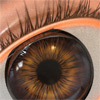- Wed Jul 27, 2005 8:52 am
#49865
This is what I've found out based on my own experience using maxwell:
I hope this can help you. Anyone wants to add something?
But remember that maxwell is Beta. There will be lots of improvements in the final release.imanobody wrote: ?’s:
1: Does poly count effect render times?
-much less than it would in MentalRay. Besides it saves you a lot of memory. I have found that Maxwell can render big scenes that lead MentalRay to crash.
2: Does the set’s size effect render times?
- Yes.
3: I saw some benchmark tests on this board, but they only used diffused materials. Does SSS, Dielectric, or Glossy Metals effect the render times?
-Yes, it takes harder to get a clean image, because this materials introduce a lot of noise.
4: The manual says that Caustics from glossy metals will slow down the renderer. How bad?
- In general , glossy materials affect the rendertime because they introduce noise.
5: The manual says that DOF and Motion Blur does not effect the render times. Is this true?
-yes, as it is an integral part of the final image, actually, every image you render with maxwell will have certain amount of DOF, you control this as you'd normally do with a real camera.
6: While rendering out an animation is there any noticeable popping (similar to the flicker created by mental ray’s photon maps or final gathering). I can live with noise, but not popping.
-No popping, nor flickering. The worst thing you can see is a fixed noise pattern in your animations, like if the movie was projected on a noisy surface.
7: I use a fur plug-in that allows me to export the fur as polys, but I read somewhere that you shouldn’t have really small polys because they will cause bad noise problems. Is this true?
-It's the same as in no. 1. the more polys, the longer rendertimes.
8: I’ve read that there is an anti-aliasing problem with objects behind a Dielectric material, but I haven’t been able to find any images that show this problem. Does this problem exist?
-Yes, but it isn't an AA problem and not in all cases, but sometimes you can see blurred objects through glass. I haven't done several images with objects behind glass, but I've heard some people have this issue.
9: The manual says that interior’s take longer then a skydome. About how much longer?
-Much longer. If there are not enough light coming to the camera, it's going to be harder to get a clean noiseless image. That's because interiors are sometimes very hard to clean.
I hope that list isn’t too long. I’ve been reading this board and many other sites, but I’m on a 56k line, so I haven’t been able to look up everything. From everything I’ve read it seems the renderer is just as stable as the one I use now (mental ray), so I’m not that worried about that. Don’t get me wrong, I love me mental ray, but currently it takes me 10 minutes to 1 hour and 30 minutes per frame. I can’t use motion blur or DOF and the only way to get rid of those dang jagged lines is to turn up the samples so high that I’d be waiting forever to get a frame done. Plus MR likes to crash all the time due to the number of prams created by my fur plug-in. I’ve been looking for an alternative for awhile now and I understand that I will need to get a render farm. I’m just trying to get an idea of how big it will be. I’ll still be using my 720x389 resolution with a frame rate of 24 fps. Scene sizes range anywhere from 20,000 to 200,000 polys.
I hope this can help you. Anyone wants to add something?
Best regards
--------------------------------
--------------------------------




 - By Mark Bell
- By Mark Bell - By Edward Leibnitz
- By Edward Leibnitz